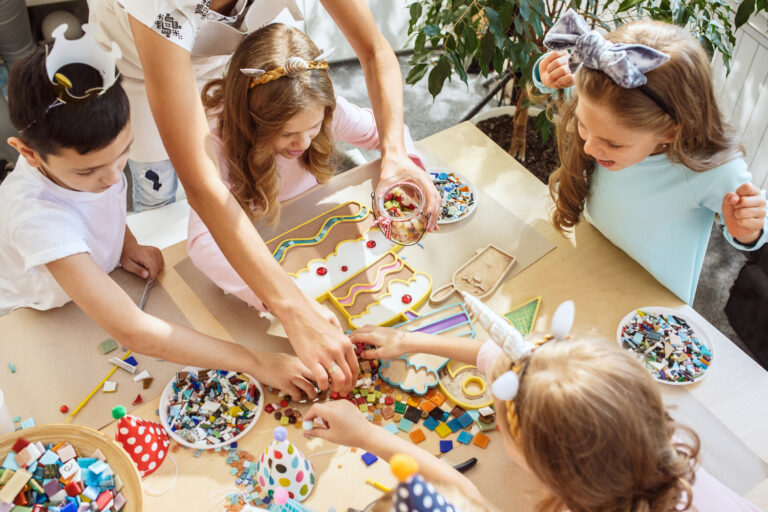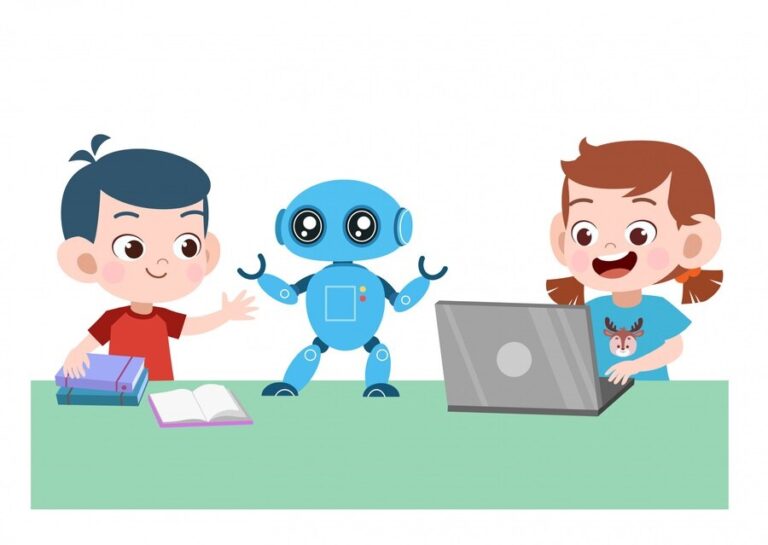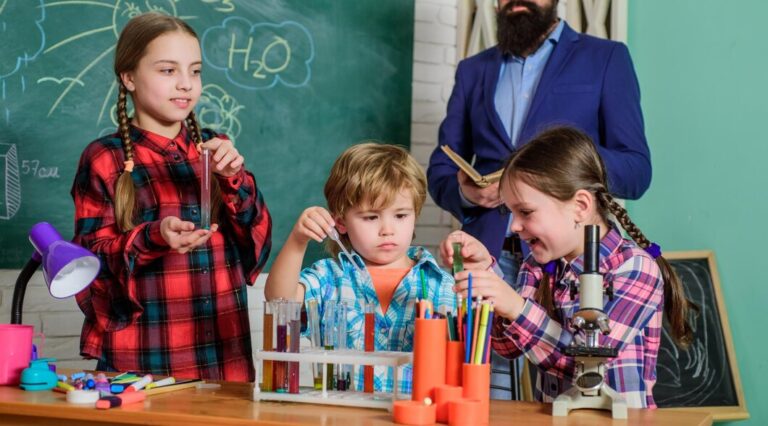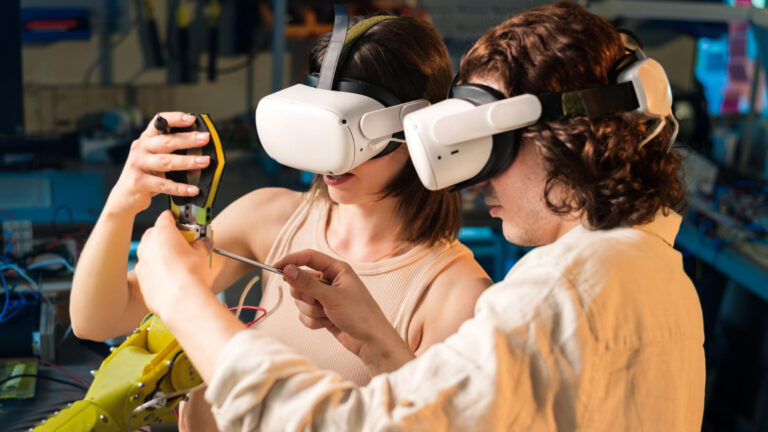NASA introduced STEM-based educational games to train astronauts. They aim to inspire the next generation of space explorers. In the past, NASA allocated over $3.6 billion to STEM education to make research and education accessible to everyone.
NASA’s Chief Technologist Douglas Terrier states, “By involving students in STEM activities from a young age we can spark their curiosity and motivate them to consider careers in science and technology.” NASA’s educational games have made learning STEM subjects more exciting.
NASA educational STEM games are relevant to space studies, like spacecraft operations, astronaut walk activities, scientific research, and emergency response procedures. These games allow astronauts to practice critical tasks in a virtual environment. So they have a basic understanding of space missions.
NASA’s Educational Games for Astronauts Training
NASA inspires generations to dream big. NASA has created educational games to teach and train astronauts. These games help future space travelers improve their skills and knowledge. Here are some notable ones:

- “Space Race Blastoff” allows players to build and launch rockets into orbit. The game gives players a hands-on understanding of physics and engineering principles.
- “Mars Rover”: In this game, players navigate a rover across the challenging terrain of Mars. They can learn about the planet’s geography and the rover’s capabilities.
- “AstroMissions”: Players start on various missions, solving puzzles. The game can teach about space exploration and technology.
- “Rocket Science 101”: This game helps understand a rocket’s different parts. Players can learn the physics behind launching a satellite into space.
- “Station Spacewalk Game”: Players perform tasks outside the International Space Station. The game gives a sense of the complexities and dangers of extravehicular activities.
- “NASA’s Eyes”: This app allows users to explore the universe from their computers. , providing valuable insights into astronomy.
- “Comet Quest”: Players control the Rosetta spacecraft. They learn about the challenges of navigating space.
- “Buzz Light-year Returns from Space”: Game explains the science behind space travel in a simple and fun way.
- “NASA Kid’s Club”: A collection of games and interactive activities introducing kids to STEM concepts.
- “Dusty the Aeronaut”: This game helps you learn about how things fly by giving you fun challenges.
Is Space Research a STEM Connection?
Studying space is connected to STEM education because it relies on science, technology, engineering, and math. For example, designing and launching a spacecraft involves physics and engineering principles. At the same time, the analysis of samples requires knowledge of biology and chemistry.
According to a report by NASA, space missions have led to the development of new technologies. These include improvements in solar energy and medical devices. Space exploration is an excellent platform to engage students in STEM. It helps to inspire them with real-world applications of these fields.
Fun STEM Space Educational Activities For Kids
Some of the fantastic, fun-filled STEM space activities for your curious kids are:
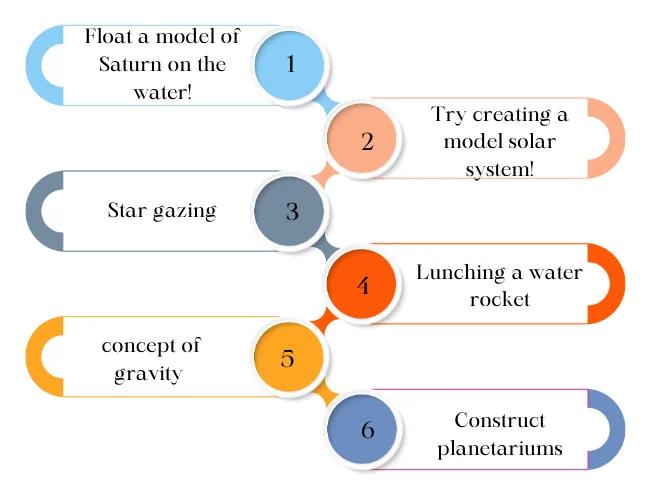
- Did you know Saturn is the planet in our solar system that is less dense than water? Imagine the look on your child’s face when they learn they could float a model of Saturn on water!
- Try creating a model solar system! This hands-on activity can help your child understand the amazing scale of space. For instance, if the Earth were the size of a pea, Jupiter would be about as big as a grapefruit!
- Star gazing is another fun and educational activity. On a clear night, you can see about 2,500 stars with the naked eye. Get a telescope, and that number jumps into millions!
- Learning about physics and engineering is exciting, like launching a water rocket. Fun fact: The highest a water rocket has ever flown is 2,044 feet, as tall as the Burj Khalifa! Now, that’s a challenge worth taking on.
- Dropping objects to see if they fall at the same speed. It can help children understand the concept of gravity.
- Children can construct planetariums using materials like cardboard and LED lights. It can help them learn about galaxies.
Space STEM Design Projects to Deploy in Classroom
Some quick, hands-on Space STEM Design projects that somebody can easily deploy in the class are:
- Build a Paper Mars Helicopter: NASA’s Mars Helicopter “Ingenuity,” which made history with its maiden flight in April 2021. It’s a fun way to introduce students to aerodynamics and engineering principles.
- Construct a Rover: This project mirrors NASA scientists’ work on the Mars rovers. Students will get basic concepts of science and engineering by building their models. This will help them explore the Red Planet.
- Rocket Construction: Rockets are the basis of space exploration. SpaceX’s Falcon 9 and NASA’s Saturn V as prime examples. Building a simple paper rocket can offer insights into propulsion and gravity.
- Design a Robotic Insect: Robotic insects could be the future of space exploration due to their small size and flexibility. By designing their own, students can explore concepts of robotics and biomimicry.
- Make a Paper Glider: This project showcases the principles of lift and drag. According to a science journal study, activities like this can help kids get better at STEM by 16%.
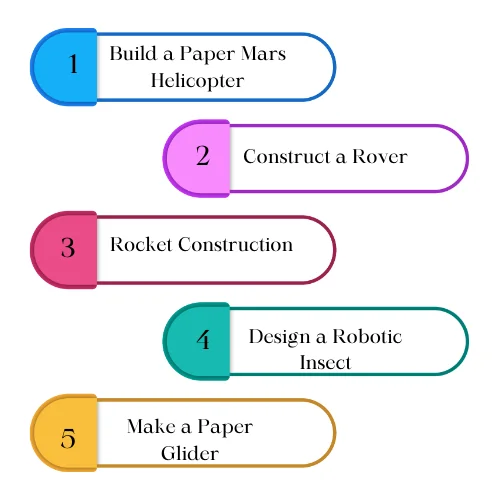
STEM Space Rocket Ideas for Kids
Students of all ages enjoy the timeless rocket design challenge. It brings life to Newton’s Third Law of Motion. They can learn that every action has an equal and opposite reaction. A few STEM space rocket ideas for kids are:
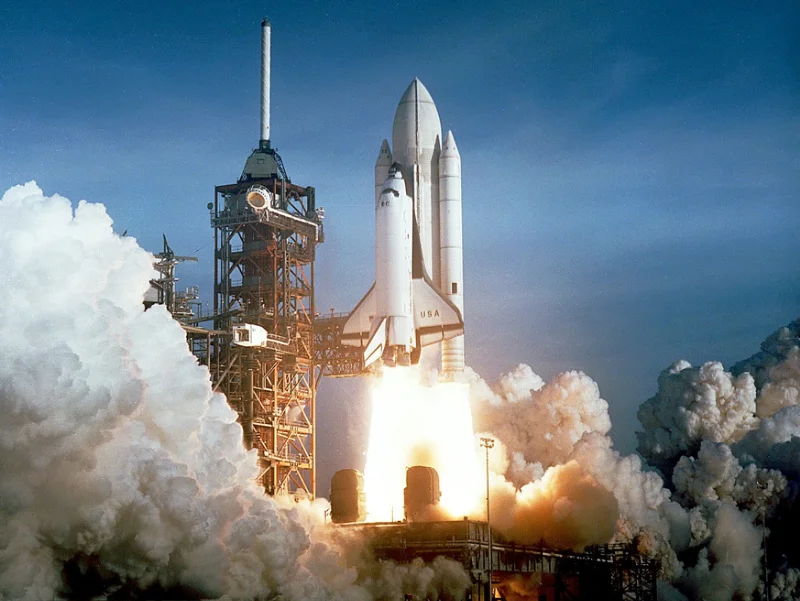
Balloon rockets
Balloon rockets are a fun and easy STEM activity. You can do it with materials you likely already have at home.
- You only need a balloon, a straw, tape, and a string.
- Attach one end of the string to a stationary object such as a chair or doorknob.
- Next, thread the straw onto the string and secure it in place by taping it down.
- Inflate the balloon and hold the end closed with your finger or a clip.
- Finally, tape the balloon to the straw and release your finger or clip to launch your rocket!
Water Rockets
Water rockets, a model rocket, use water as a reaction mass. These rockets are a favorite among students, providing an engaging hands-on experience. Water rockets prove the principles of aerodynamics and the Newtonian concept of momentum. The force that makes the rocket go is created when pressurized air and water shoot out of the nozzle.
Baking Soda and Vinegar Rockets
Baking soda (a base) and vinegar (an acid) combine, and they react to produce carbon dioxide gas. This gas builds up pressure inside the rocket until it is forced out, propelling it upward. This activity demonstrates Newton’s laws and introduces students to basic chemistry concepts.
Matchstick Rockets
Matchstick rockets offer an exciting demonstration of propulsion principles. The head of the match acts as a fuel. Gases are rapidly released when ignited, and the matchstick is propelled in the opposite direction. This activity should always be closely supervised!
Straw Rockets
One of the simplest and most accessible forms of rocket design is using straws. This activity only requires scissors, tape, and a straw to create a flying rocket. Students can experiment with different materials for the rocket’s body, such as paper or lightweight plastic. This will help them observe how it affects the rocket’s flight.
Bottle Rockets
Bottle rockets are a classic STEM activity that is both fun and educational. It uses household materials such as plastic bottles, water, and air pressure to create a simple rocket design. Students can experiment with different nozzle sizes and shapes to see how it affects their rocket’s height and distance.
Quick Overview
- NASA has launched STEM-based educational games to train astronauts. These games enable astronauts to practice critical tasks virtually.
- Space research is connected to STEM education. Both involve science, technology, engineering, and math principles.
- STEM space activities for kids include creating a model solar system, star gazing, and launching water rockets.
- Space STEM design projects for classrooms include building paper Mars helicopters, constructing rovers, and designing robotic insects.
- Various STEM space rocket ideas for kids provide engaging hands-on experiences and show scientific principles such as aerodynamics and propulsion.

